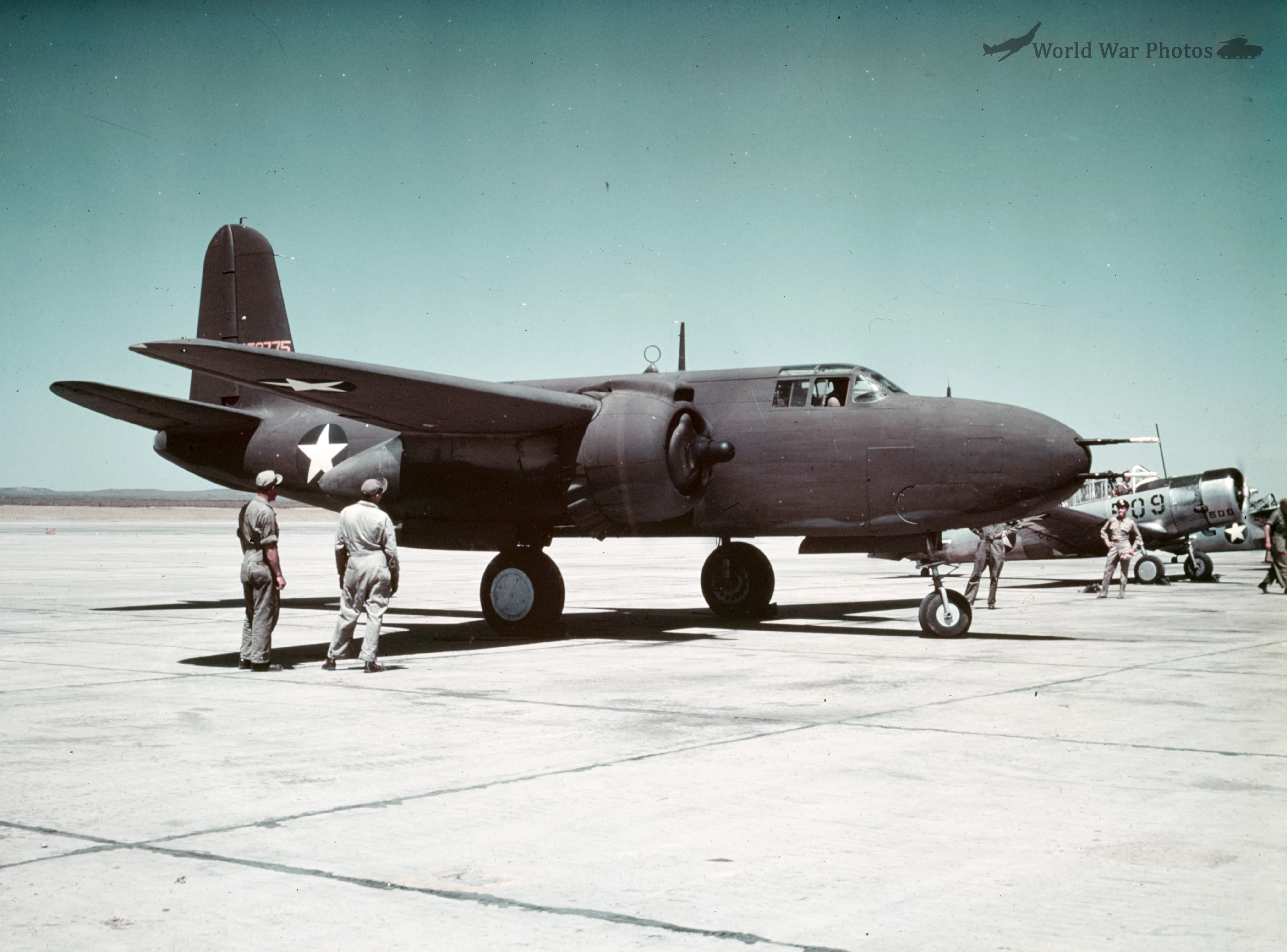The A-20G series, delivered to the AAF from March 1943 to June 1944, was the most produced variant, with a total of 3,300 A-20Gs and derivative A-20Js completed in those fifteen months. Nearly half of these, 1,606 units, were provided to the Soviets through Lend-Lease. All A-20Gs were assembled in Santa Monica and typically sent to the Douglas modification center in Daggett, California, for final adjustments before delivery.
Starting with the A-20G-20-DO models, the flexible upper guns in the gunner’s compartment were replaced by a Martin 250E-CE-10 power turret with two .50-caliber M-2 machine guns, a feature standard in all subsequent A-20s. Additionally, a .50-caliber machine gun was installed in the lower flexible position, replacing the earlier .30-caliber gun.
The defining characteristic of the A-20G was its solid gun nose, the first such feature in a DB-7 derivative since early experimentation with the Model 7 five years earlier. The A-20G’s nose armament included four fixed 20mm cannons and two .50-caliber machine guns. Early versions of the A-20G were particularly formidable ground attack aircraft, featuring this heavy nose armament, and some sources suggest the first 250 A-20Gs also had a .30-caliber aft-firing gun in each nacelle, although photographic evidence does not confirm this.
As the production of the A-20G evolved, the nose cannons were replaced with an additional four .50-caliber guns, resulting in six fixed, forward-firing machine guns. This configuration was later adopted in the design of the A-26B Invader. Other early A-20Gs retained .30-caliber fixed guns in the rear of the fuselage.
Powered by the 1,350 bhp R-2600-23 Cyclone engine, the A-20Gs were produced in four major blocks: 750 units (serials 42-53535 to 42-54284), 350 units (serials 42-86563 to 42-86912), 1,200 units (serials 43-9038 to 43-10237), and 1,000 units (serials 43-21252 to 43-22251). All were produced under the same contract (AC-32732), with Douglas receiving $79,055 per aircraft, excluding government-furnished equipment like engines, propellers, and armaments.
The 1,293rd A-20G became the first A-20J by being fitted with a revised bombardier’s nose section. This decision was influenced by the utility of having bombardier-nosed A-20s as formation leaders, particularly for the Ninth Air Force in Europe. The A-20J maintained the same equipment and engine as the A-20G, featuring two fixed .50-caliber guns in the nose. The new nose design incorporated a blown Plexiglas one-piece section, reducing the window framing seen in earlier models like the A-20A, A-20B, and A-20C.
